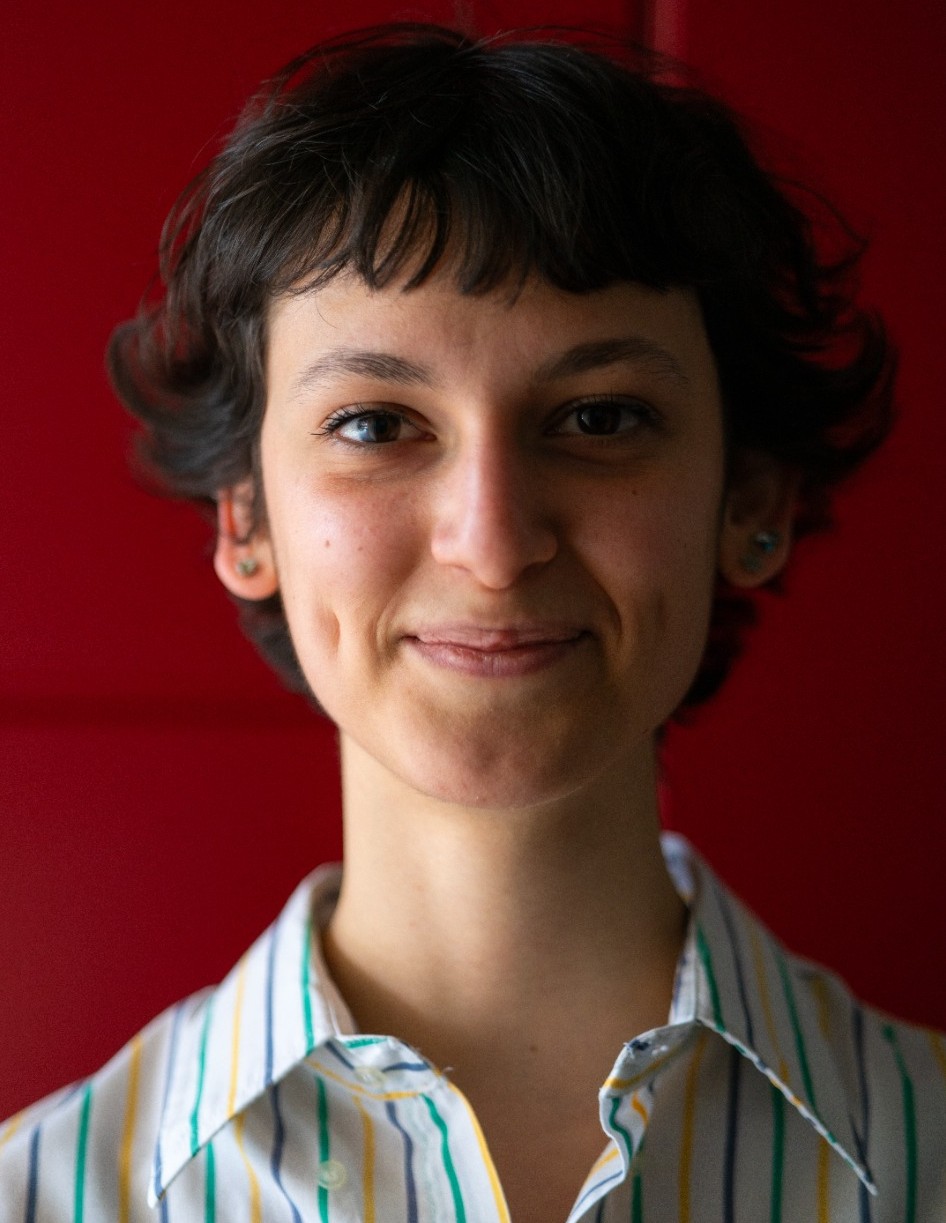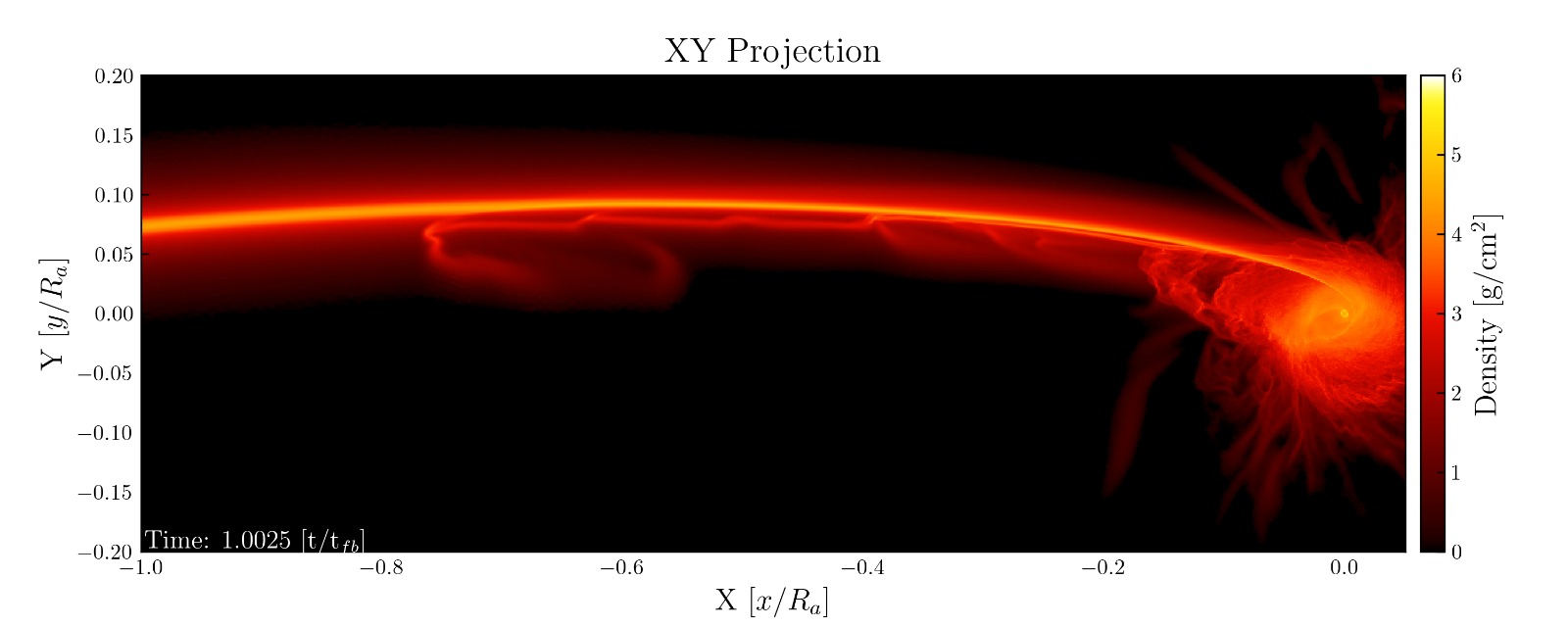
Paola Martire
The detection and characterisation of Tidal Disruption Events (TDEs) represents a unique powerful tool to investigate the mass distribution of Intermediate Mass Black Holes (IMBHs). These transients happen when a star approaches a Black Hole and is torn apart by tidal forces, releasing an amount of energy comparable to that of a SuperNova.
Since current and future surveys are able to detect TDEs, having a robust physical model to describe them will allow to constrain the involved (few) parameters, such as the mass and the spin of the IMBH and the mass of the star.
Simulations are necessary instruments to model these transients. However, until now they have not been able to realistically follow the evolution of the system from the disruption of the star to late times, due to numerical challenges. These issues have now been overcome and we are running and analysing the first ab initio simulations of TDEs.
Our goal is to explore the parameter space, deriving the observables for future comparison with observations. Moreover, we focus on the shocks happening during these events, investigating their geometry and physical mechanism.

Ab initio simulation of a TDE of a Sun-like star by an IMBH with a mass of one million solar masses. After 1.6 fallback times, it is possible to see the stellar material circularise around the black hole. Different kind of shocks happen between or inside the stream and the disc.